Imagine a future where making decisions in complex supply chains is as easy and intuitive as asking a friend for advice. That future is not as distant as it may seem, thanks to a groundbreaking development known as Artificial General Intelligence, or AGI. This next-level AI isn’t just about executing pre-programmed tasks; it’s about equipping systems to think, learn, and adapt just like humans do. As we dive into this new horizon, we’ll explore how AGI is not just changing the game in supply chain management, but also setting the stage for a full-scale revolution.
Understanding AGI and Its Role in Supply Chain
Artificial General Intelligence, or AGI, is a type of computer intelligence aiming to perform any task that a human can. Unlike traditional artificial intelligence, which is designed for specific tasks, AGI can learn, understand, and apply knowledge across a range of functions, much like a human brain.
Now, let’s dive into how AGI is shaking things up in supply chain management. Supply chains are complex networks, connecting the dots between raw materials and the finished products reaching our hands. Managing these networks means dealing with uncertainties, predicting demands, and ensuring timely delivery – it’s a huge task.
AGI changes the game by bringing in adaptive problem-solving skills. It can assess vast amounts of data from past and present, seeing patterns that humans or regular AI would miss. With predictive analysis, AGI forecasts demand spikes or dips and adjusts supply chain actions in real-time. Think of it as a weather report that doesn’t just tell you if it’s going to rain but also immediately opens an umbrella for you.
Beyond predictions, AGI excels in optimizing routes for transport. It analyzes traffic, weather, and delivery schedules to suggest the quickest and most cost-effective paths, saving time and fuel. Also, it improvises. If a delivery truck breaks down, AGI quickly recalculates and reroutes other vehicles to fill the gap, minimizing disturbance in delivery times.
Another significant revolution is AGI’s role in warehouse management. It seamlessly organizes inventory, controls robotic systems for sorting and packing, and even supervises drones for inventory checks. AGI systems learn from every interaction, constantly improving efficiency.
Additionally, AGI in supply chain management is like having a round-the-clock analyst that can identify potential bottlenecks and suggest infrastructural adjustments. It’s proactive in ensuring that machinery maintenance is kept up-to-date, as well as making sure that supply chain workers are being utilized effectively.
AGI is also becoming pivotal in the customer service front, offering personalized assistance and improving customer satisfaction without human intervention. When issues arise, it can compute the best solutions and adjust operations accordingly without losing a beat.
In the face of global challenges like natural disasters or pandemics, AGI’s resilience shines. It can swiftly modify the supply chain networks to adapt to changing circumstances, ensuring that essential goods are prioritized and vulnerabilities are addressed.
By integrating into supply chain management, AGI is not just revolutionizing; it’s paving the way for a future where supply networks are smarter, more responsive, and more resilient. With AGI, businesses are now poised to tackle the unpredictability of the global market with an intelligence that learns, adapts, and optimizes continuously for peak performance.
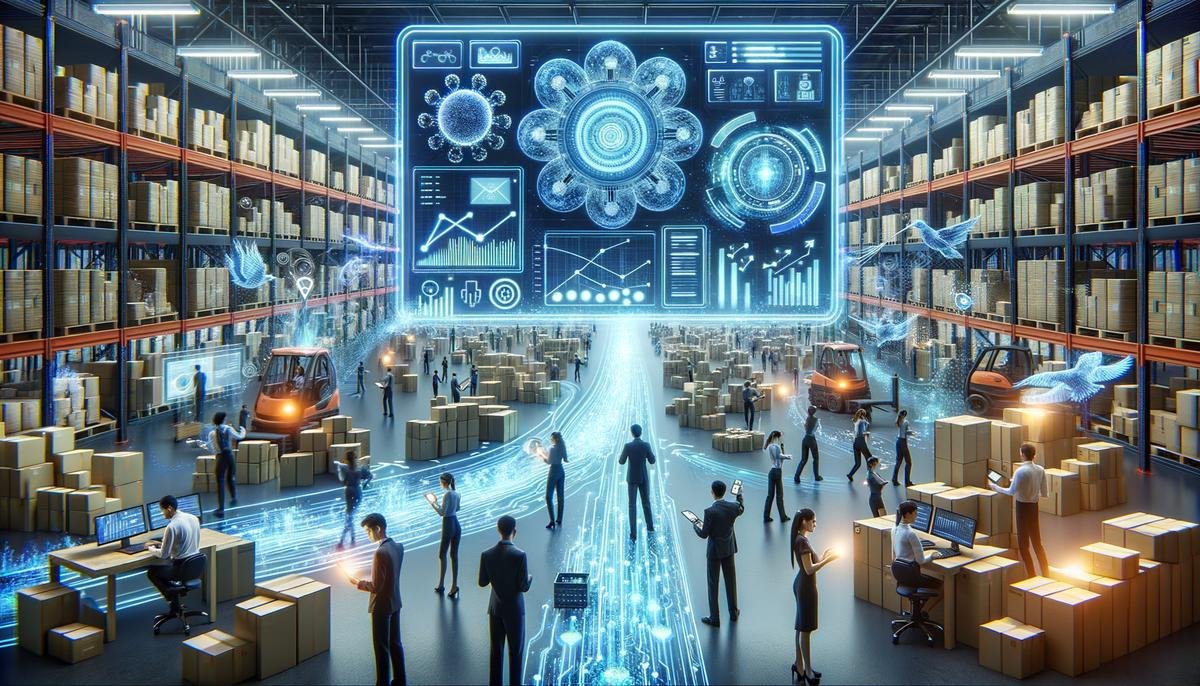
Current State of AGI in Predictive Logistics
The predictive logistics landscape is swiftly adapting to the groundbreaking capabilities offered by Artificial General Intelligence (AGI). With its advanced cognitive functions, AGI is transforming the way logistics companies tackle real-time decision-making and long-term strategic planning. AGI systems, distinct from traditional AI due to their ability to learn and understand any intellectual task that a human can, are changing the game completely.
At the forefront of this revolution, AGI enhances the efficiency of product distribution. Leveraging adept learning algorithms, these systems not only predict where goods should be shipped but also forecast the quantity and timing, resulting in highly efficient restocking processes. Companies that harness the power of AGI can respond nimbly to market fluctuations, manage resources more effectively, and, crucially, stay one step ahead of the competition.
In the realm of operational adjustments, the strategic prowess of AGI is evident. It scrutinizes vast sets of logistics data, picking up on subtle patterns undetectable to human analysts. From here, it recommends adjustments to shipping frequencies or warehouse operations, ensuring that businesses are not just keeping pace, but setting the pace in their respective industries.
Another key area where AGI leaves its mark is in the domain of risk management. Global supply chains face numerous uncertainties, from volatile markets to unpredictable natural disasters. AGI’s predictive power is adept at creating models that simulate a gamut of potential disruptions, guiding logistics wizards to devise robust contingency plans. This preemptive approach to risk minimizes downtime and maintains the flow of goods, safeguarding both businesses and consumers from potential supply chain hiccups.
Amidst these technological strides, one pressing question remains: Is AGI positioning itself to replace human expertise in logistics management? While AGI significantly streamlines operations and enhances data processing capabilities, it currently acts as a supportive partner to human decision-makers rather than a replacement. The nuanced understanding and emotional intelligence of humans complement AGI’s computational advantage, striking a balance between tech and touch.
AGI’s ascendancy in predictive logistics lays down a blueprint for future advancements. As technology evolves, we can anticipate AGI taking on a more pronounced role in orchestrating complex supply chain networks, promising a new era of logistical efficiency and reliability. Logistics professionals and companies that embrace AGI’s potential will likely find themselves at the vanguard of a smarter, more responsive supply chain environment that rises to meet the demands of our rapidly advancing world.
In the sprawling, dynamic landscape of predictive logistics, AGI is not merely a fleeting trend; it is fast becoming an indispensable powerhouse driving innovation and improvement across the board, ensuring that businesses not only survive but thrive in the face of relentless change and competition.
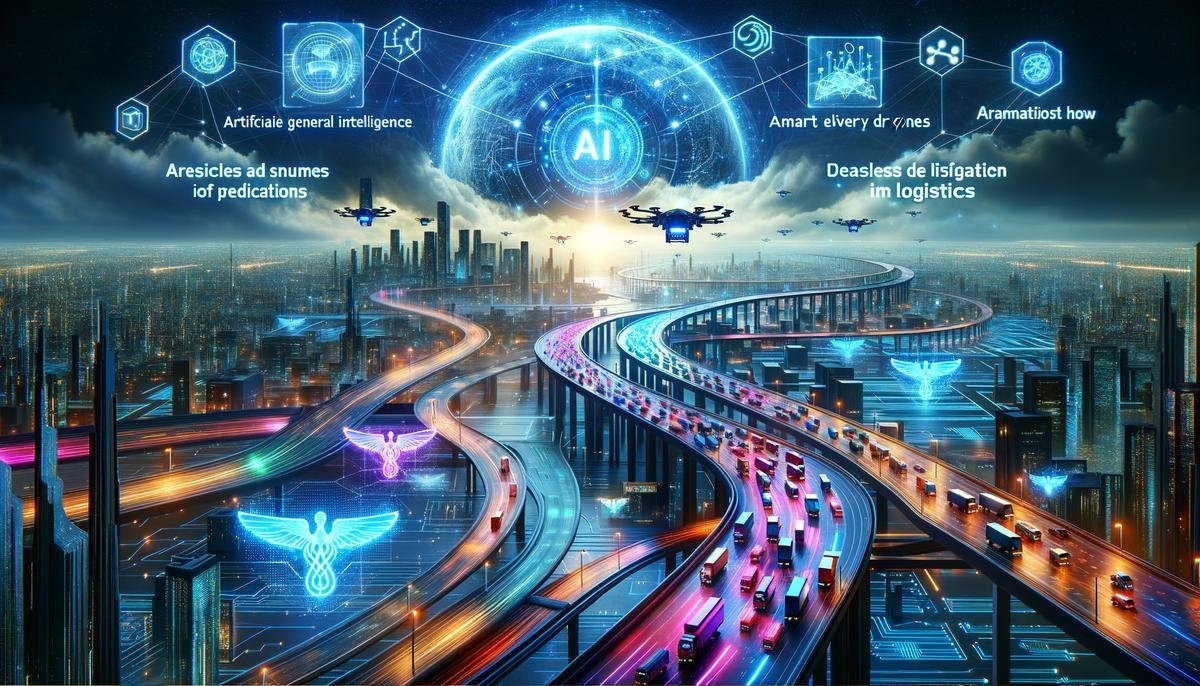
AGI-Driven Predictive Analytics in Supply Chain
Predictive analytics, infused with the prowess of Artificial General Intelligence (AGI), are reshaping supply chain operations into something resembling a futuristic symphony of efficiency and foresight. This immense computational intelligence extends beyond conventional AI’s narrow tasks, bringing a level of versatility that mirrors human reasoning. It’s not just about machine learning algorithms predicting what’s next in the supply chain; AGI’s adaptability means it can learn, reason, and apply knowledge in varied situations, fundamentally redefining the industry’s capability to anticipate the future.
Visualize tides of data as they flow from transactions, social media, weather forecasts, and global news. AGI sieves through this digital ocean with ease, spotting intricacies and correlations that humans might miss or take weeks to find. It’s like a seasoned chess player who not only thinks several moves ahead but also adapts to every shift on the board. This enables AGI to project demand patterns with striking accuracy, reducing the specter of overstocking or understocking, ultimately ensuring that the right products are at the right place when customers reach out for them.
In the bustling world of transportation logistics, AGI takes the driver’s seat in revolutionizing route optimization. By analyzing countless variables in real-time – from traffic congestion to shipment consolidations – AGI determines the most time and fuel-efficient paths for delivery trucks. Imagine a scenario where a sudden road closure arises; AGI swiftly recalculates, rerouting the fleet with minimal disruption. Truckers are thus empowered to meet delivery deadlines with fuel-sipping precision.
Venturing into the warehouse, AGI is transforming the game of storage and retrieval. With AGI-perfected algorithms, robotic systems can seamlessly pick, pack, and sort inventory, all while continuously learning and adapting to new products and packing techniques. This creates an agile environment where stock levels align dynamically with predictive trends, minimizing waste and streamlining operations.
Sometimes bottlenecks aren’t where we expect them. Through AGI’s all-seeing analytical lens, supply chains are scrutinized to identify and resolve these efficiency impediments. These insights spur actions, such as recommending infrastructure enhancements or adjustments to manufacturing schedules.
When it comes to customer service, AGI offers a more personalized and proactive approach. It doesn’t just respond to inquiries; it anticipates customer needs, sometimes even before the customer does. From suggesting order modifications to providing real-time shipping updates, AGI fosters a customer-centric atmosphere that can build loyalty and trust.
AGI is not only intelligent – it’s resilient. When the unpredictable occurs, like a sudden market shift or a natural disaster, AGI-driven systems swiftly recalibrate, ensuring minimal disruption to supply chains. They model different scenarios to anticipate what might happen next, keeping businesses one step ahead.
As for the future, it’s bright and brimming with potentials yet to be tapped. Integrating AGI into supply chain networks is gradually painting a picture of what tomorrow could bring – a landscape where seamless logistics are the norm. Indication such as fuel prices, geopolitical climates, and product life cycles are all within AGI’s grasp, offering unparalleled insights for making informed decisions.
Amidst all this advancement, one question lingers: does AGI stand to replace human insight? Not quite. It’s more of an unprecedented partnership. AGI supports logistics experts by handling voluminous data crunching and analysis, freeing humans to tackle strategic decision-making and creative problem-solving.
Supply chain professionals would do well to embrace AGI, not as a looming disruptor, but as a transformative ally. Those who do are setting the pace in a world where the only constant is rapid change. To thrive in such a dynamic environment, it boils down to leveraging AGI’s capabilities to fuel innovation and maintain a competitive edge in the intricate ballet of global supply chain management.
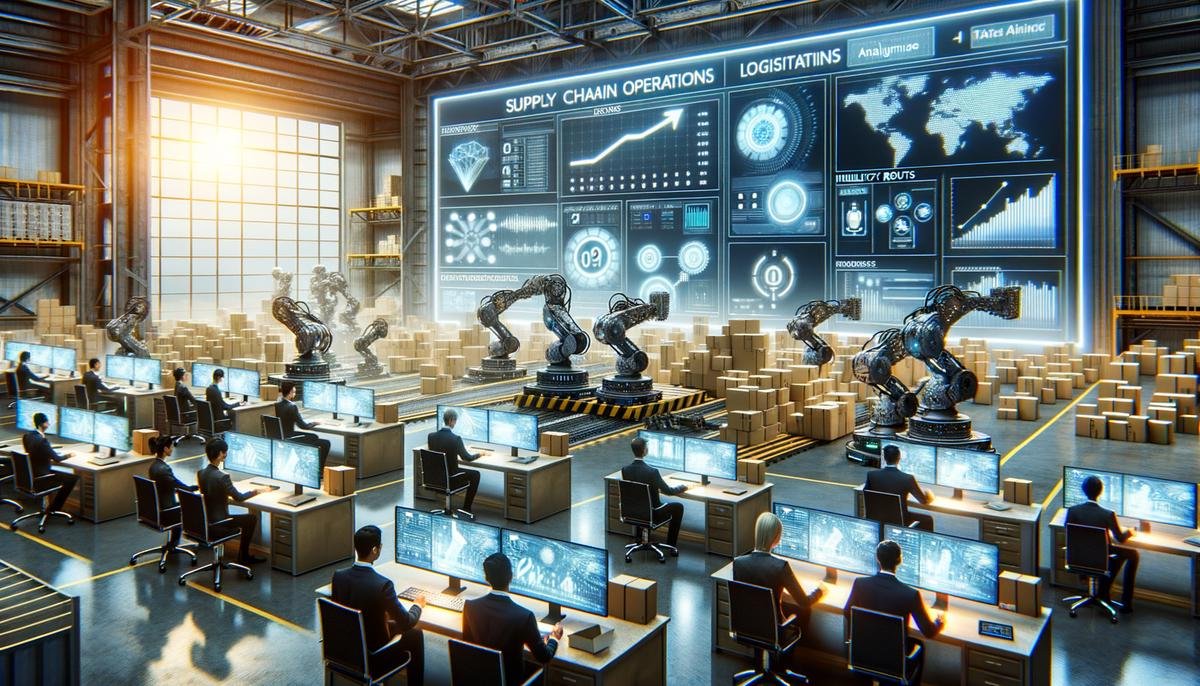
Challenges and Ethical Considerations of AGI
Integrating Artificial General Intelligence (AGI) in supply chain management opens up transformative strategies for optimization, responsiveness, and decision-making. However, the deployment of AGI systems is not without its hurdles and ethical dilemmas. Among these, the issue of job displacement stands out. As AGI systems become adept at tasks traditionally performed by humans, the threat to employment in sectors such as planning, procurement, and logistical coordination becomes apparent. Companies must grapple with the balance between advancing technology and the potential social impact of a reduced workforce.
Data privacy and security are paramount when employing AGI, given the sensitivity of supply chain data. The potential for breaches and misuse of information threatens not just individual companies but the broader market and consumer base. The rise of AGI raises questions about who holds the ownership and accountability for decisions made by autonomous systems. Can an AGI system be trusted with making ethical decisions or should safeguards be put in place to ensure human oversight?
Bias in AGI also poses a considerable ethical dilemma. AGI systems learn from existing data, and if that data reflects historical biases, the AGI’s decisions may perpetuate these injustices. Ensuring that AGI algorithms are fair and unbiased is essential to avoiding discrimination in supply chain practices.
The tension between efficiency and ethics also arises in the environmental context. While AGI can optimize routes and reduce carbon footprints, determining the ethical boundaries of exploiting resources for efficiency gains is intricate. Companies must weigh the benefits of AGI-powered efficiencies against the potential environmental exploitation and ensure sustainability is a core aspect of AGI implementation.
Ultimately, trust and transparency within AGI systems are crucial. As businesses and customers alike become increasingly reliant on AGI for supply chain management, ensuring that these systems are transparent in their decision-making processes and that there is a trust in their actions is essential for widespread acceptance.
As industries move forward, it’s essential to navigate these hurdles and address the ethical dilemmas head-on, ensuring that the progress offered by AGI in supply chain management is not only technological but also socially responsible and equitable. Embracing AGI requires a proactive approach to its challenges, ensuring its benefits are harnessed while its potential issues are carefully managed.
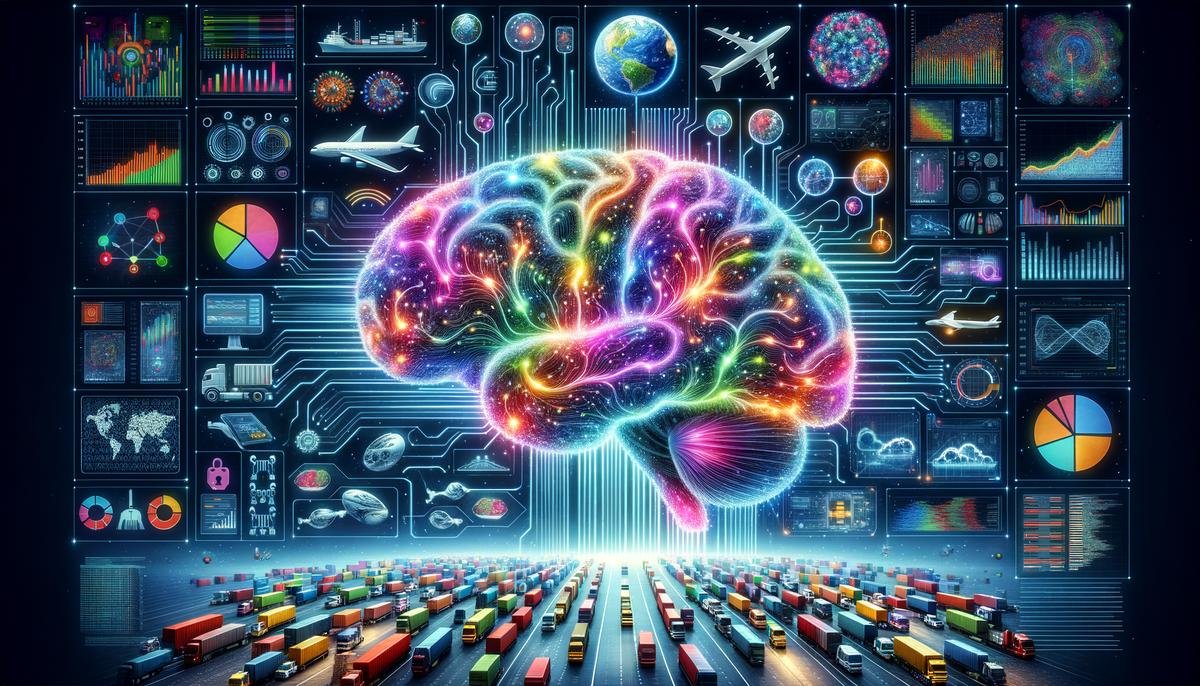
Future of AGI Integration in Supply Chain Optimization
The adoption of Artificial General Intelligence (AGI) within the supply chain ecosystem hints at a future where seamless integration and heightened efficiency are the norms rather than exceptions. As businesses and logistics professionals look ahead, the prospects for AGI integration brim with potential, creating a robust framework for the supply chain of tomorrow.
Crucially, the embrace of AGI will likely reshape the landscape of employment within the supply chain. As AGI systems take on more complex roles traditionally handled by humans, the nature of work will evolve, prompting the need for workforce reskilling and a shift in job functions. Rather than a complete replacement of human personnel, AGI is poised to work synergistically with human intelligence, taking over repetitive and predictive tasks while humans tackle creative problem-solving and strategic planning.
Importantly, the deployment of AGI raises significant ethical considerations. The supply chain ecosystem must navigate the delicate balance between advancement and ethical responsibility. Concerns over data privacy and security are paramount as AGI systems handle vast troves of sensitive information. Companies will need to implement stringent protocols to protect data integrity and privacy.
Another ethical consideration is the potential for built-in biases in AGI systems. These biases could perpetuate existing inequalities and historical injustices within the supply chain if not carefully addressed from the design stage. Achieving unbiased AGI requires a conscientious approach to programming and a diverse set of data to ensure that outputs are fair and equitable.
As AGI systems take on autonomous decision-making roles, questions of ownership and accountability come to the fore. Organizations must define clear guidelines and responsibilities for decisions made by AGI to maintain a trustworthy and transparent system. This accountability ensures that AGI actions align with organizational values and legal requirements.
The integration of AGI within the supply chain also has environmental implications. Ethically-minded companies need to consider the ecological impacts of their AGI-driven processes. Balancing efficiency with environmental stewardship will be crucial in maintaining a sustainable supply chain that benefits both businesses and the planet.
The challenges of AGI integration call for a proactive approach. It’s not enough to implement AGI technologies without anticipating the potential ethical dilemmas and hurdles they may bring. Businesses must stay ahead of these challenges by fostering a culture of ethical awareness and social responsibility. By doing so, they ensure that the transition towards an AGI-enhanced supply chain moves forward in a manner that is responsible, equitable, and beneficial for all parties involved.
Looking to the future, the role of AGI in the supply chain ecosystem seems destined to grow, becoming an indispensable ally for organizations worldwide. Its capacity to process complex information, learn and adapt, and support human decision-making heralds a new era in which the synergy between AGI and human ingenuity could yield an unprecedented level of optimization. The task ahead lies in harnessing this potential while navigating the ethical landscape with care and consideration, ensuring progress remains anchored in values that advocate for a fair and just supply chain environment.
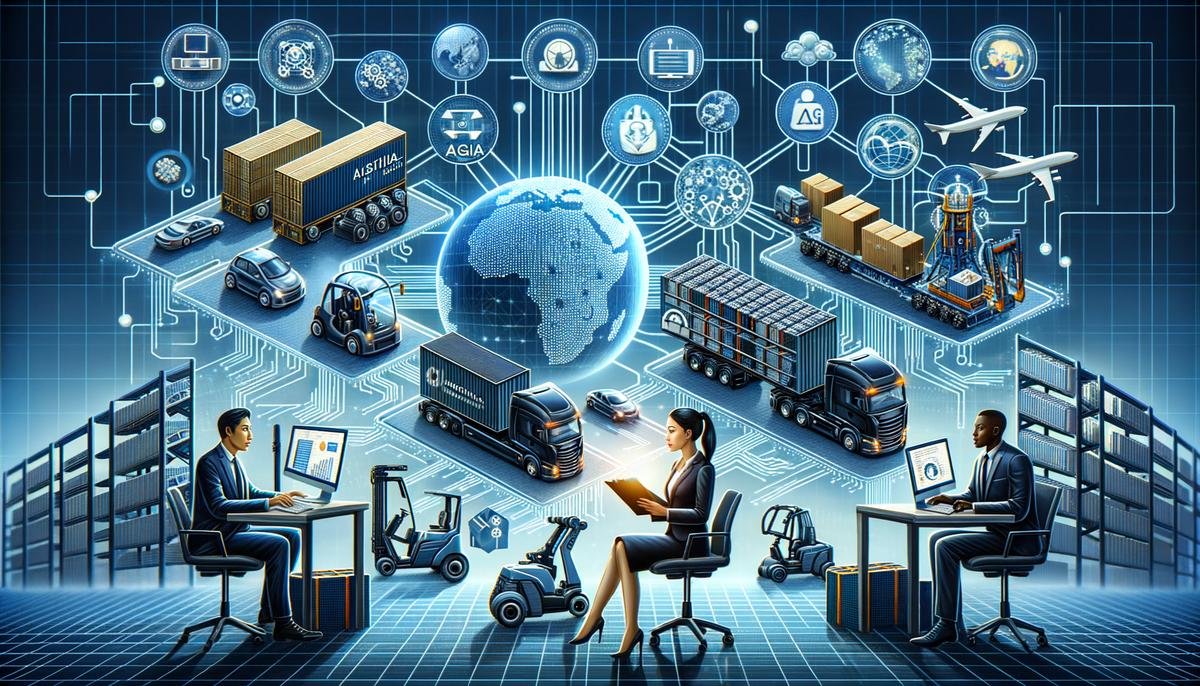
As we stand on the precipice of a new era in supply chain management, the wheels set in motion by AGI cannot be slowed. From the enhancement of predictive analytics to the intricate management of logistics and inventory, AGI is weaving its way into the very fabric of this industry, promising to craft a smarter, more efficient, and incredibly responsive supply chain network. While this journey is not without its challenges, the potential of AGI to reshape our world is a testament to the relentless human pursuit of innovation—a pursuit that will continue to drive us toward an ever more interconnected and intelligent future.




